Some 38 years ago, after a short career in the American Merchant Marine, my need to be on the water prompted me to begin looking for a small sailboat. At the time, I was living on a tidal river that had low bridges between me and open water, so I needed a boat with a mast that could be lowered easily. A friend told me about a Drascombe Scaffie, as the Devon Scaffie was then known, that was for sale in Portland, Maine. It turned out to be the perfect boat for my situation and now after thousands of miles, I am still sailing this very enjoyable and versatile boat.
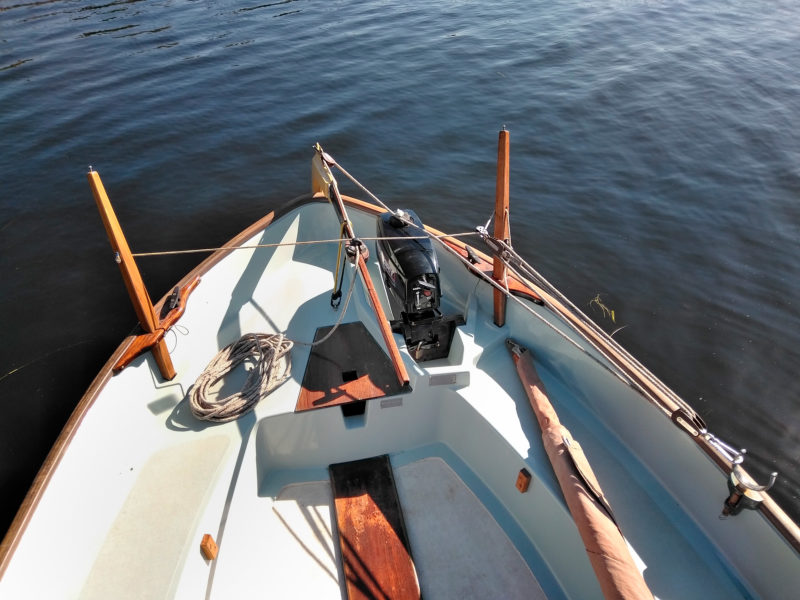 Tom Hepp
Tom HeppThe Scaffie has two unusual horns aft, which support a rope traveler for the mainsail sheet above the tiller and the outboard.
The Scaffie was designed by John Watkinson, founder of the Drascombe line of small boats, and has been in production in the U.K. since 1978. It is 14′9″ long with a beam of 5′9″ and, at 462 lbs fully rigged, ideal for trailering behind even small vehicles. Its 15″ draft allows access to almost any waters. The boomless standing lugsail has an area of 100 sq ft. Two uprights are set in sockets in the stern and support a shoulder-high rope traveler above the tiller. The mainsheet is led through a block on the rudderhead, then led forward along the tiller where it can be cleated or gripped with the tiller.
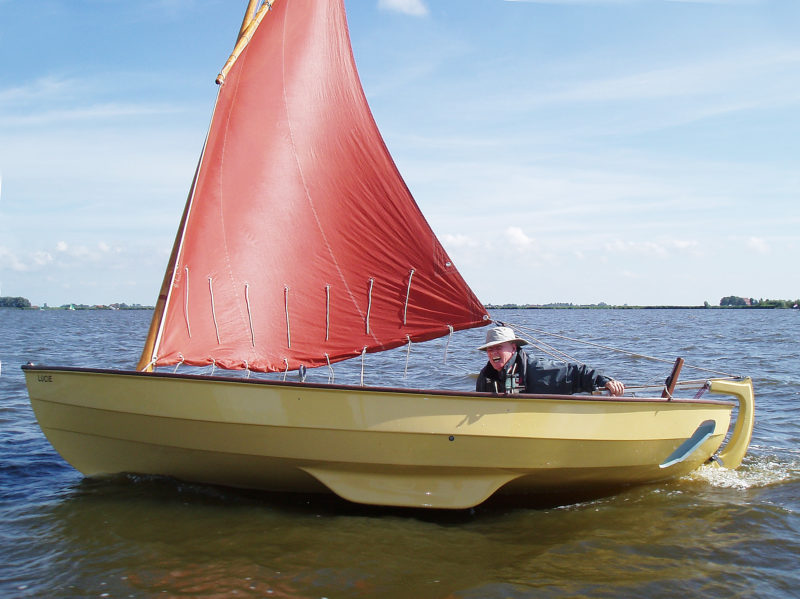 Michel Maartens
Michel Maartens Heeling in a good sailing breeze, the Scaffie shows its windward bilge keel. The leeward bilge keel is providing lateral resistance to supplement that of the full-length keel.
A full keel, along with twin 36″-long bilge keels, leaves the interior of the Scaffie uncluttered by a centerboard trunk for added comfort and ease of movement in the cockpit.
A trailer to transport a Scaffie will generally support the full-length keel with a few rollers and outboard bunks to support the hull between the keel and bilge keels. It takes less than 15 minutes to rig the unstayed mast and sail to be ready to launch. Upon returning to the ramp, securing the rig and loading it onto the trailer is quick and easy. The mast partner is equipped with a gate, so the mast is set in the step, pivoted, upright, and locked by the gate. It is much easier than having to lift the mast to drop through a conventional partner. The partner has cleats for the halyard and the tack’s downhaul. There are two wooden rowing thwarts and molded fiberglass side benches with flotation that can accommodate up to four people.
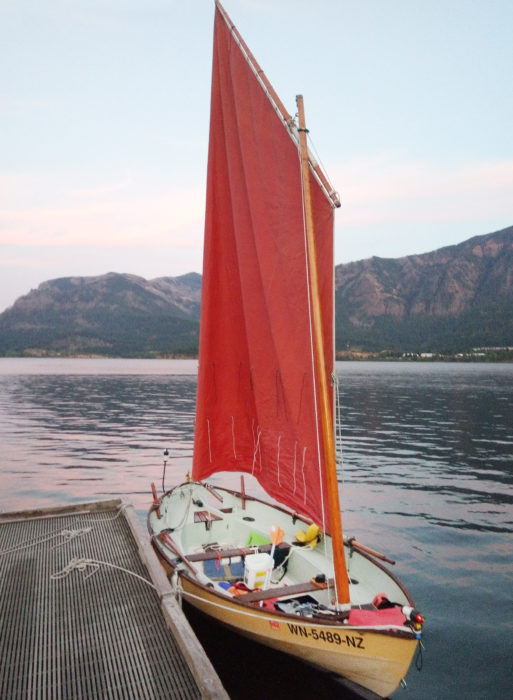 Ole Helgerson
Ole HelgersonThe center and bilge keels mean that the cockpit is unobstructed by a daggerboard or centerboard trunk.
It takes only a light wind for very relaxed sailing. In steady winds under 14 knots the boat is dry and an absolute delight to sail. The Scaffie was drawn with two reefs to reduce sail when the wind picks up. When I’m sailing solo, I set the first reef at around 14 knots. When double-reefed, the Scaffie can handle steady winds up to 20 knots, especially when there are two or more sailors aboard; that makes for very exciting sailing and you can expect to get wet.
Any small open boat is at risk to be swamped in certain wind conditions and the Scaffie is no exception, even when double-reefed, but with good judgment it can be avoided. In 38 years of experience, I have completely swamped my Scaffie only two times, but the boat remained upright and didn’t capsize. On both occasions the wind was strong and very gusty. The foam-filled molded flotation compartments kept the boat afloat and it only needed to be righted, bailed out, and I was back on my way.
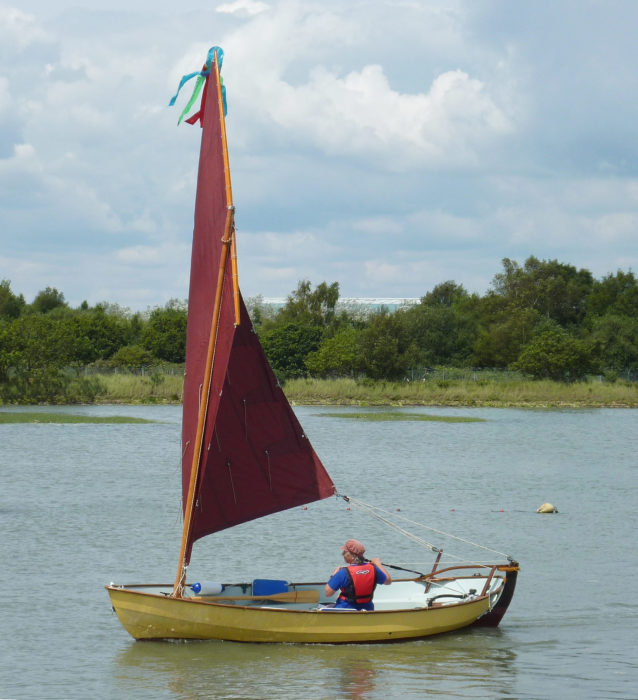 Elizabeth Wade-Brown
Elizabeth Wade-BrownThe Scaffie carries a boomless 110 sq ft lug rig which can be set up at the ramp and ready to sail in about 15 minutes.
In my logbook is a passage that demonstrates the Scaffie’s extraordinary seaworthiness. I had spent a night high and dry on Steve Island south of Stonington, Maine; the forecast for the following day was for small craft warnings with winds to 20 knots or more from the southwest. The wind was already picking up. Staying among a group of islands that did not provide enough shelter would make for an uncomfortable day, and the best shelter was over 10 miles away with 8 of those miles crossing the open waters of East Penobscot Bay.
With the sail double-reefed, I set out into the bay one hand on the tiller and the other on the mainsheet, closehauled on a port tack. The wind was already at 20 knots or more and seas running up to 4′. Whitecaps were everywhere and one broke against the side of the boat. Spray filled the air but the Scaffie remained steady and rose to the crest as the wave rolled under the hull. For almost two hours, beating on one long tack, the Scaffie averaged 4.6 knots to windward into a heavy sea and took on very little water. At the time, I was in my early 50s and had 12 years of experience sailing the Scaffie. Now 77, I am still confident in my ability to handle this amazing little boat, but I avoid days when the wind is predicted to be 20 knots or more.
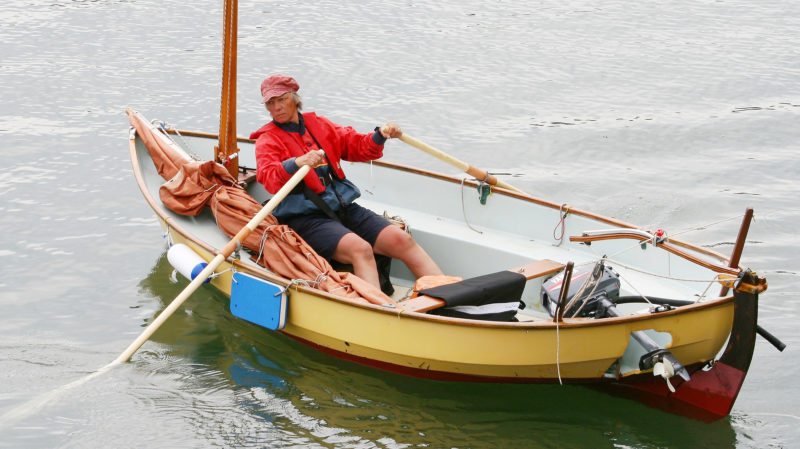 Elizabeth Wade-Brown
Elizabeth Wade-BrownFor rowing, the sail can be dropped and the outboard cocked up while still in the well. The tiller is lashed to the traveler to keep it steady amidships. Scaffie owners use oars ranging from 8′ to 9′ 6″.
The Scaffie normally carries one set of oars and is rowed solo from the forward or the aft station to maintain the best trim. A speed of 2 to 2 ½ knots can be comfortably maintained with the rudder set to ’midship. When not in use, the oars are stowed on the centerline under the thwarts.
An outboard of 2 to 3 hp can provide auxiliary power. The engine well is inboard making access to the outboard convenient and safe. The well is open aft so the outboard can pivot over obstructions as well as be kicked up for rowing and sailing, rather than removed. Scaffies are molded with a well but can be ordered with the opening in the hull not cut out. The Scaffie will cruise with the 2.5-horse at about 4 knots when set at half throttle for best fuel economy. The well is offset to port far enough to permit the use of the rudder for steering while under power.
With simple modifications for overnight, the Scaffie makes an ideal solo beach cruiser. There is plenty of space along the centerline in the bottom of the boat to lay out a pad and sleeping bag, but with such an arrangement there is limited space for gear. My solution has been to replace the thwarts with a 6′-long platform level with the side benches. It provides plenty of room for sleeping with a hatch in its center to provide access to gear stowed below. Crutches installed fore and aft support the mast as a ridgepole, for a cover to provide shelter from the elements.
Most of my overnight and multi-day cruises are on the coast of Maine where the tides are up to 10′. In some locations, I anchor in deep water to stay afloat through the tide cycle; in others, I like to plan overnight stays with high tides in the evening and in the morning, and set the Scaffie parallel to a soft bank to rest on the center keel and the shoreside bilge keel when the tide goes out. The bilge keels are not at the same depth as the center keel, so the Scaffie is made level by coming to rest across a gentle slope. Since the bilge keel on the water side doesn’t make contact with the ground, lines from the bow and stern to shore are tensioned as they are tied off to keep the boat secure and prevent it from rolling away from the bank. The rudder doesn’t extend below the keel line so it can remain in place when beached.
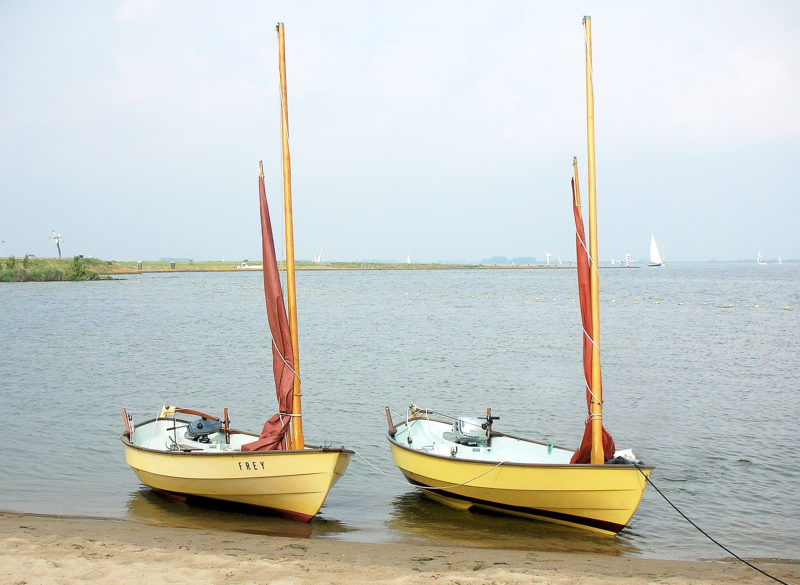 Michel Maartens
Michel Maartens The keel makes it difficult to drag the Scaffie out of the water, but the twin bilge keels will keep it from heeling excessively if the tide drops.
The Scaffie is built to last and doesn’t require a lot of maintenance. Mine has always been kept inside when not in use, and at the start of each sailing season, I treat the inside and outside of the hull with fiberglass color restorer that provides UV protection and resists stains. The gelcoat on my nearly four-decade-old Scaffie is still shiny with only minor scratches. Every three or four years, I put a coat of spar varnish on the hardwood trim, tiller, mast, and oars. I am still using the original sail. This is a testament to the lasting quality built into this boat.
After 38 years of sailing the lakes, rivers, and bays of coastal Maine, I trailered my Scaffie to northeast Florida and we will begin to explore the sheltered waters of the St. Johns River, yet another chapter in the adventures of Scaffie hull #109. I take great comfort and security in the boat and enjoy all three ways of propelling it. If you like sailing, rowing or motoring, the Scaffie can do it all. ![]()
Tom Hepp has spent most of his life around boats and water. He is a veteran of the U.S. Navy and Merchant Marine and has worked professionally as a boatbuilder for over 10 years. He spends summers on the coast of Maine and winters near the St. Johns River in northeastern Florida. He designed, made cardboard mock-ups of, and built two take-apart pirogue-style boats (see “Nesting Boats”) to take in his van during summer vacations.
Devon Scaffie Particulars
[table]
Length/14′9″
Waterline length/12′ 3″
Beam/5′ 9″
Draft/1′ 3″
Weight, complete/462 lbs
Sail area/100 sq ft
[/table]
The Devon Scaffie is available from Honnor Marine for £12,995 ($17,869) and includes foam buoyancy, rudder, tiller, sail, Sitka spruce spars, and bronze rowlock sockets.
Is there a boat you’d like to know more about? Have you built one that you think other Small Boats Magazine readers would enjoy? Please email us!
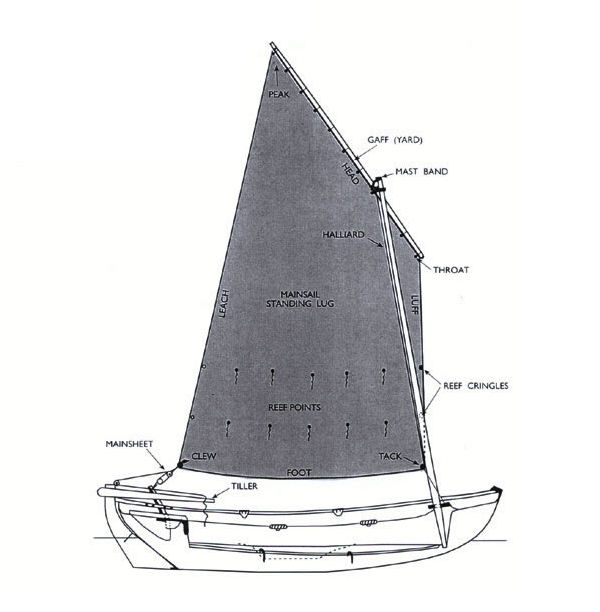
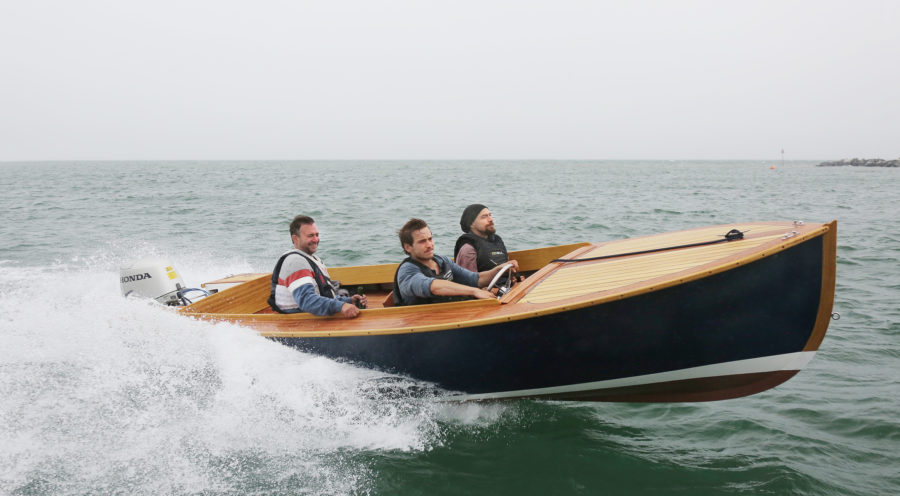
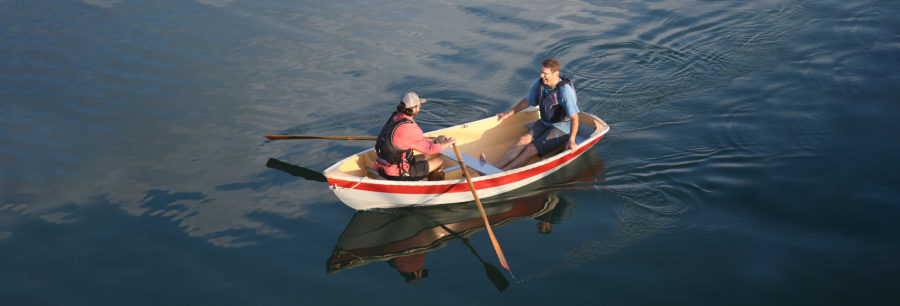

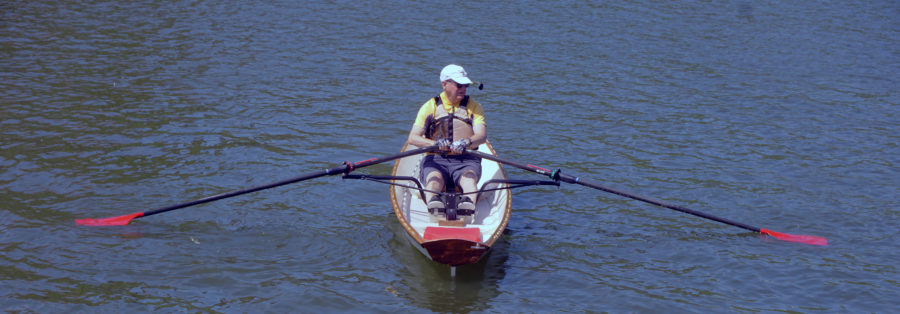

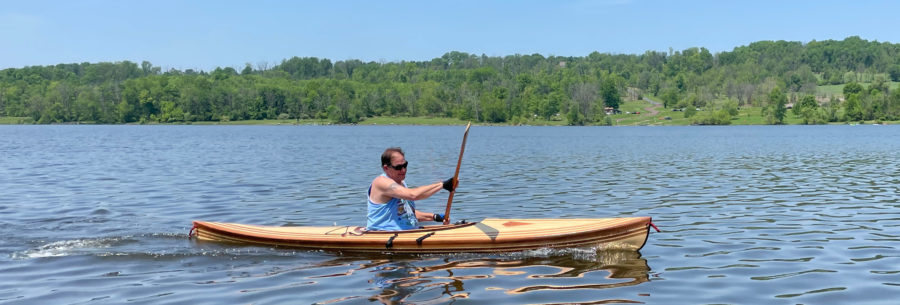


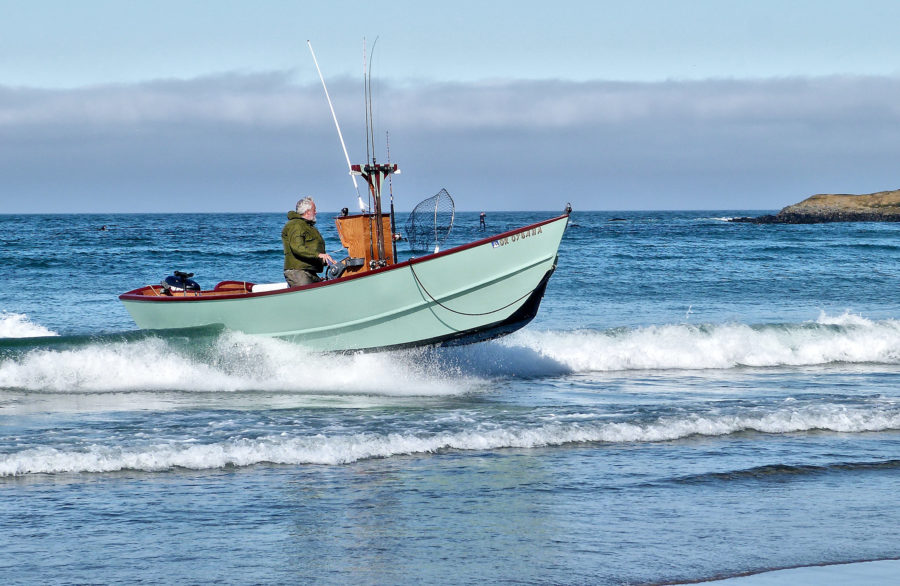
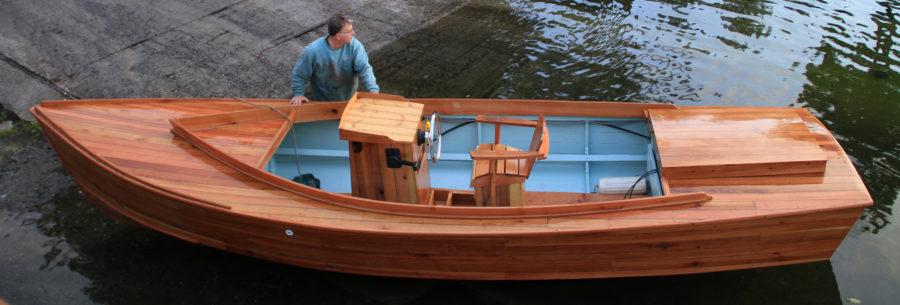
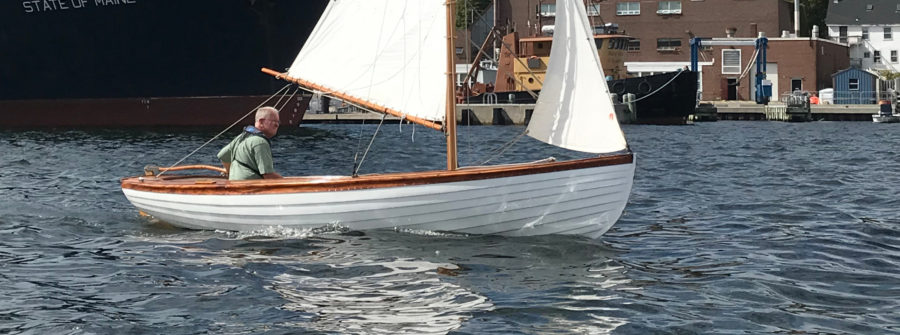
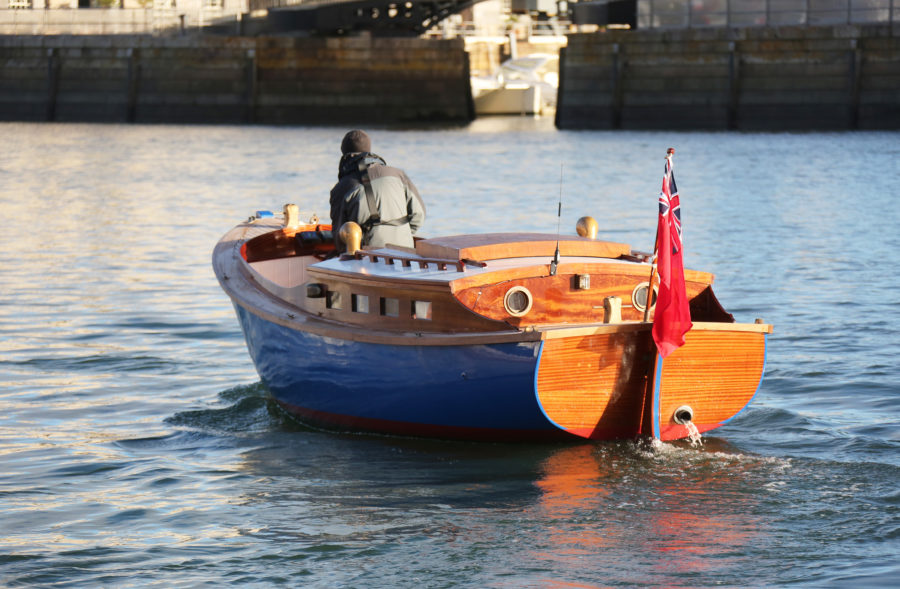
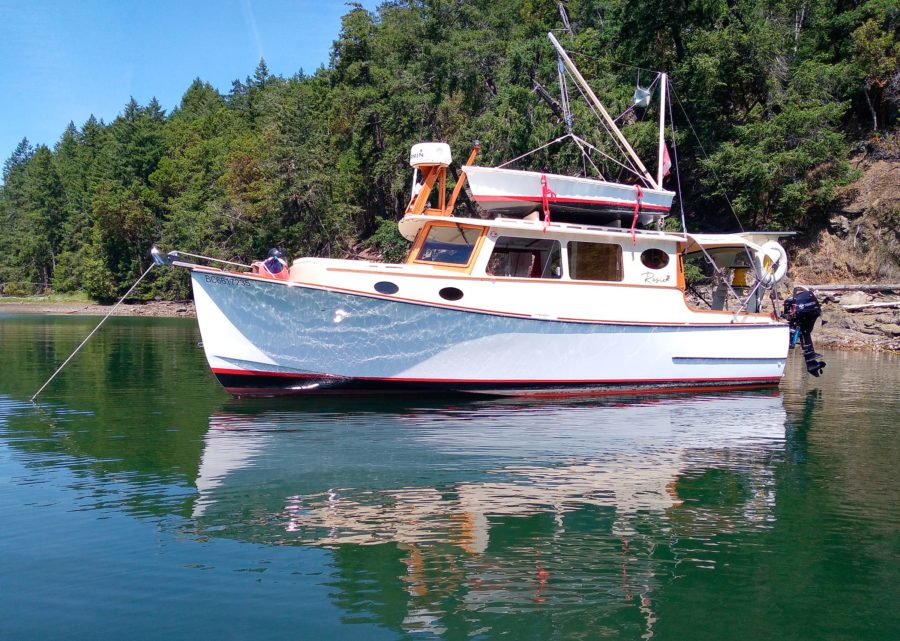
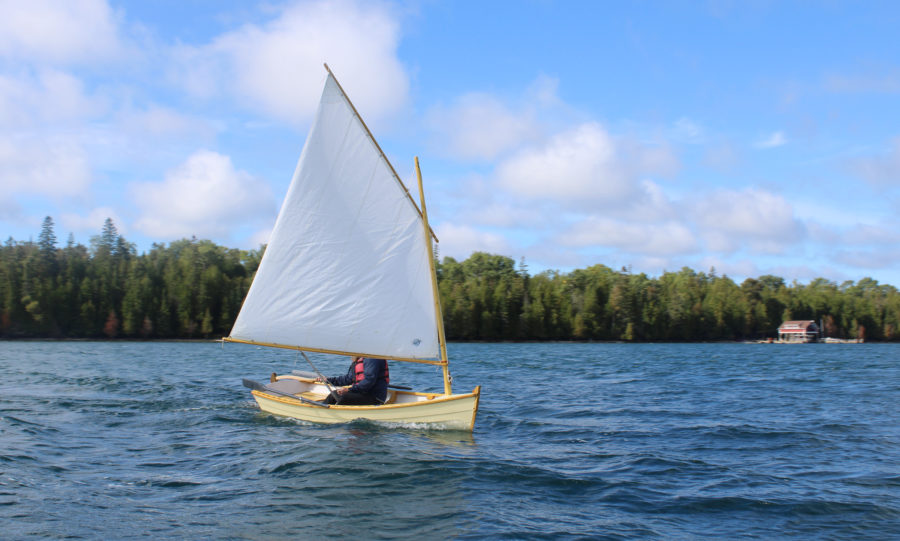
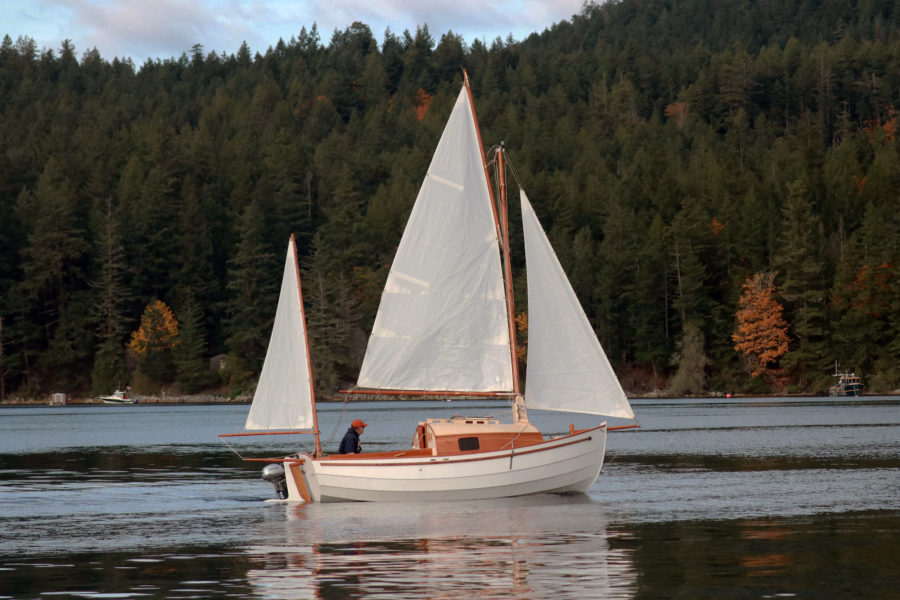
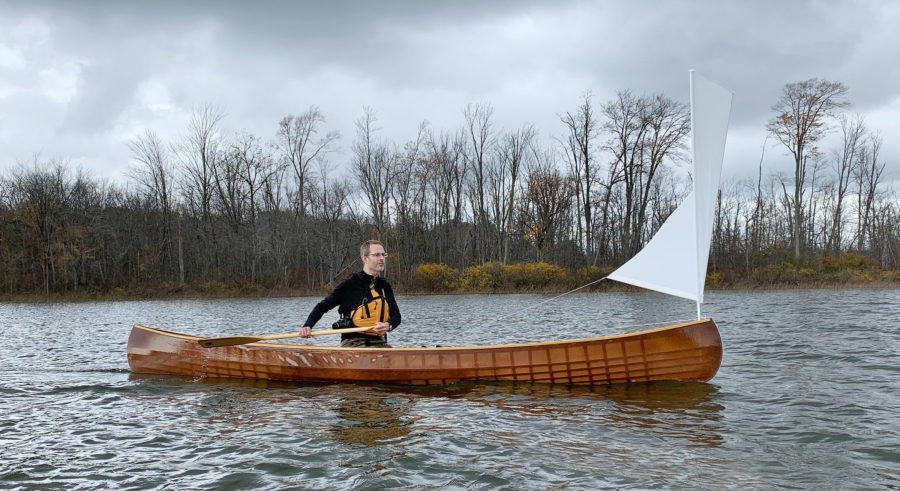
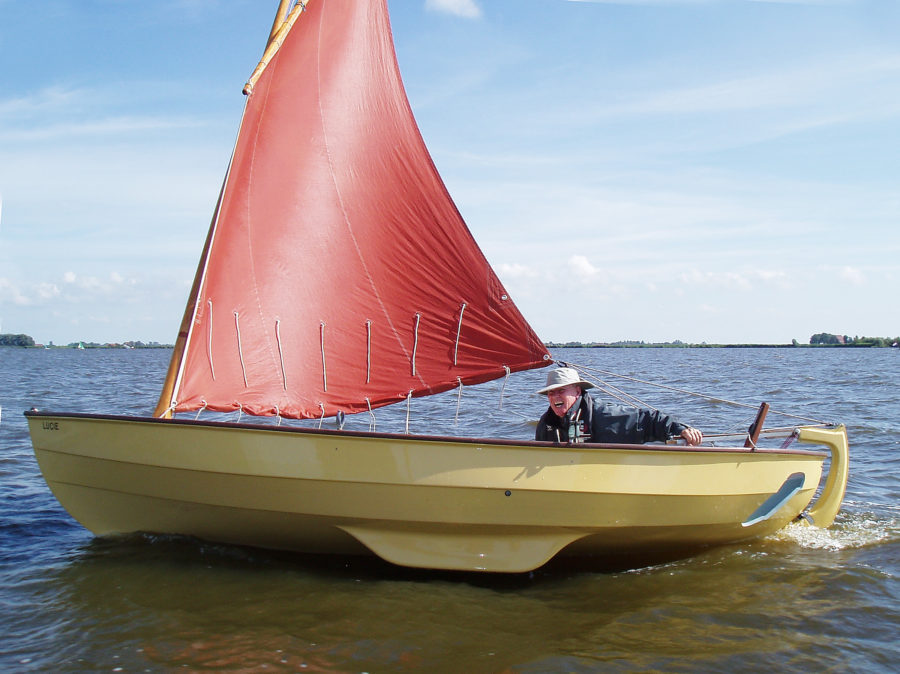
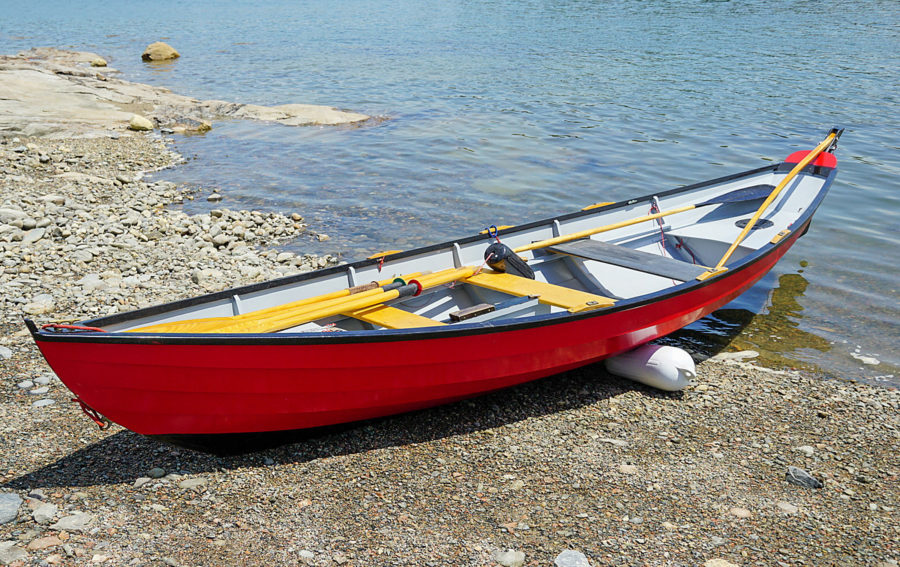
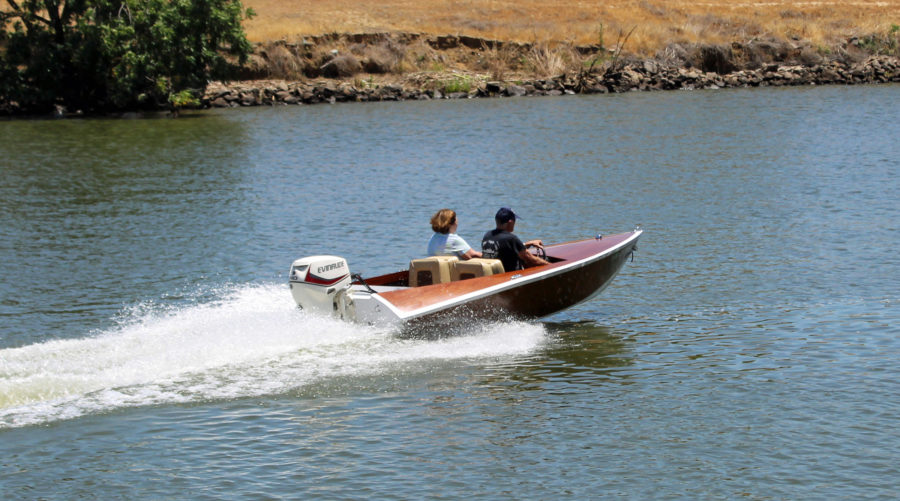
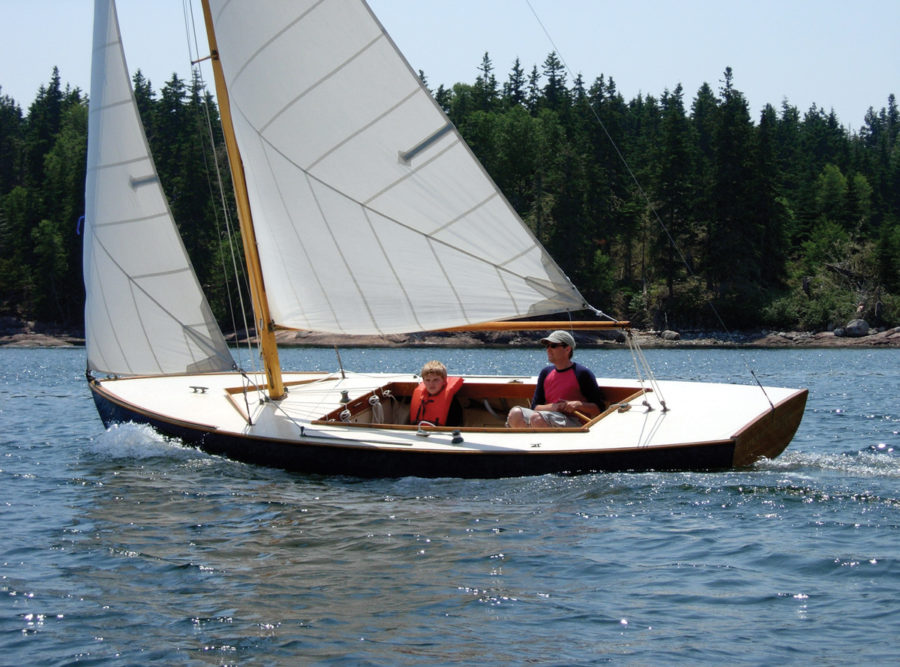
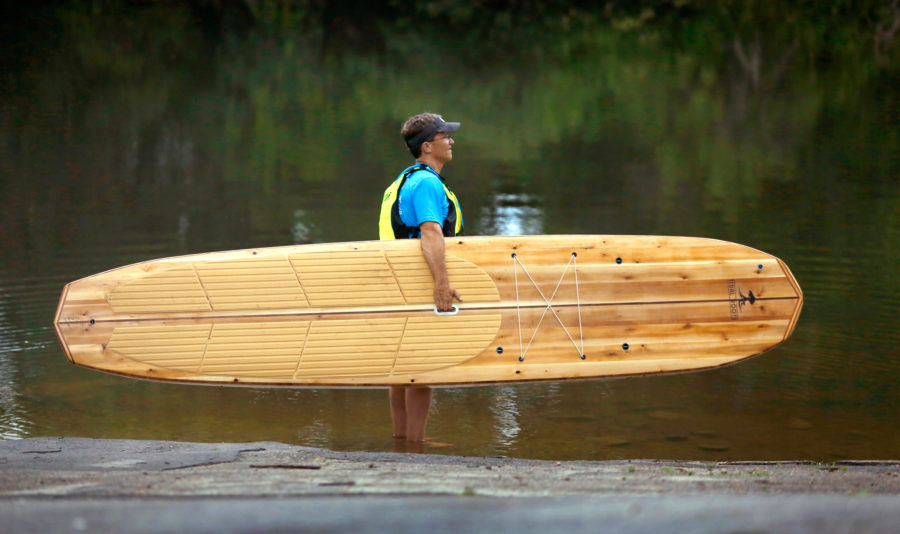

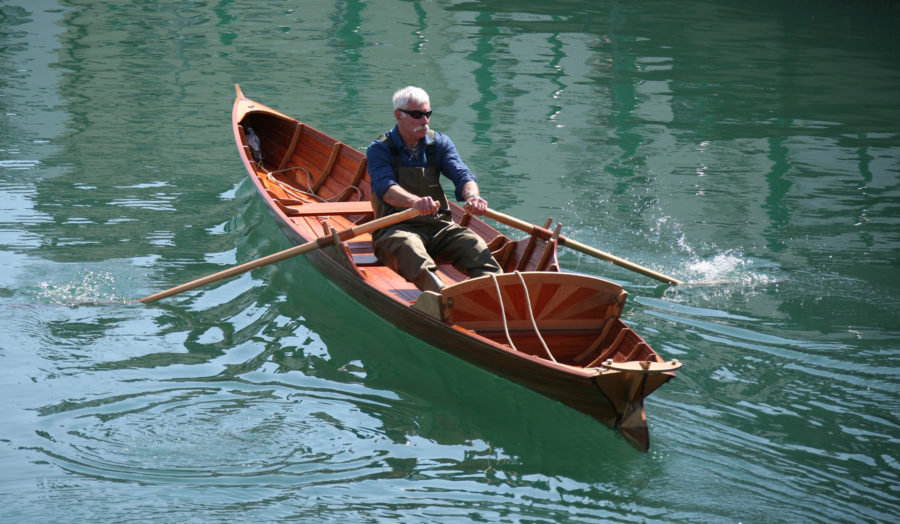
Just bought one and in the process of rehabilitation.
http://www.GeekTechSailor.blog for rebuilding photos and comments. Enjoy, Jude
Enjoyed the article. I bought my Scaffie in 1984 used for $3900, still in great shape. Sailed on Spruce Run Reservoir and Barnegat Bay in NJ. Now it’s in Lincolnville Maine at our lake house. There are a couple of them in Camden Harbor and there was an older gentleman in Stonington who had one. Great little boat. There used to be an owners group but it disappeared a couple years ago.
Great article. I have recently purchased one myself. She was built in 2004 by Honnor Marine and has been well looked after. I will be spending the winter months re-varnishing all of her woodwork and getting her ready for our first adventure together in the Spring. So many places that I am looking forward to going with her. The first place will probably be Bala lake in North Wales. Roll on Spring!
Hi Tom,
As your boat is forty years old, it will be a Drascombe Scaffie made by the original Honnor Marine. After they went bankrupt, the Honnor Marine name was bought by a company who markets their boats as “Devon Scaffies,” The Drascombe name was bought by a second company, who retains the Drascombe brand. A bit confusing, but both companies build their version of the Scaffie.
Hi Tom and Dick,
Just to clarify – all the pictures in this article of the “mustard” yellow Drascombe Scaffies are of boats built by the original Honnor Marine, in Totnes, Devon. These boats are all around 40 years old and still going strong. The current, third incarnation of Honnor Marine is based in Poole, Dorset – marketing their boats as Devon Scaffies – is the only builder, as Drascombe by Churchouse Boats don’t build Scaffies – though they do supply spares.
Dick, That was a really lovely sail you made me for my Scaffie you see in the picture.
Has anyone started a Google Map and registry for Scaffies? Would be interesting to locate some nearby to sail with. I’m in Louisiana but sail from Texas to Florida—Northern Gulf of Mexico coast. Anyone nearby?
Hi Tom, thanks for the article. The boat is described as a keelboat, and I’m interested to know if it has any ballast, either fixed or water ballast.
The Scaffie is a full keel day sailor. It does not have ballast.
I thoroughly enjoy reading these stories whilst learning about small boat cruises and camping.
John,
Australia
.
Interesting to see those little bilge keels. I have just recently completed building a Bernd Kohler Eco 6 sailing catamaran. The designer called for a dagger board in one hull which I was reluctant to incorporate because it really impacted the interior. Bernd came up with an alternative of an inward facing bilge keel on each hull. The hulls are simple chine hulls and each bilge keel is 900mm in length and 90mm deep, and as I said face inward and do not protrude below the bottom of the hull giving a hull draft of only 200mm. I was a bit skeptical as to just how well these bilge keels would work, but they were very quick and easy to build so I thought they were worth a try. Happily after 8 months of sailing I am very happy with the windward ability of the little catamaran. So it is good to know that for a cruising yacht there are other workable alternatives to a deep keel or centerboard.
Tom, great write up. Good to ‘see’ an old shipmate from way-back, making good with small boats…
Hi everyone, A bit late to the party on this one, but I’ve been a Scaffie sailor in Washington State for some years. Still a novice. Re ballast and bilge keels: The DA Forum had some posts on water ballast. Apparently, John Watkinson had mentioned to someone that water could be used as a ballast. Having accidentally tested that hypothesis, I can say that it does smooth the ride. Dunno about other aspects of performance. The better option per Elizabeth Wade-Brown is iron chain. Easier to install, remove and does not promote mildew if left in place. Tested that one with leaky boat cover one winter. The long keel can make coming about a bit slow. Techniques that work here are having some speed up, fully sheeting in the sail at the start of the turn, pushing the tiller fully over and weighting the lee side, letting the hull’s curvature help her around. When water comes in the scuppers, that’s about right amount of lean in my experience. Hoping that’s useful.
Full sails and fair winds,
Ole
I missed buying one by >< this much a few years ago. I have seen the same boat come up for sale several times, but increasing in price each time. Last time she was double the price, had a mouse-eaten and repaired sail, and was missing some hardware, but was still commanding a price double that of what I almost got to pay for it.